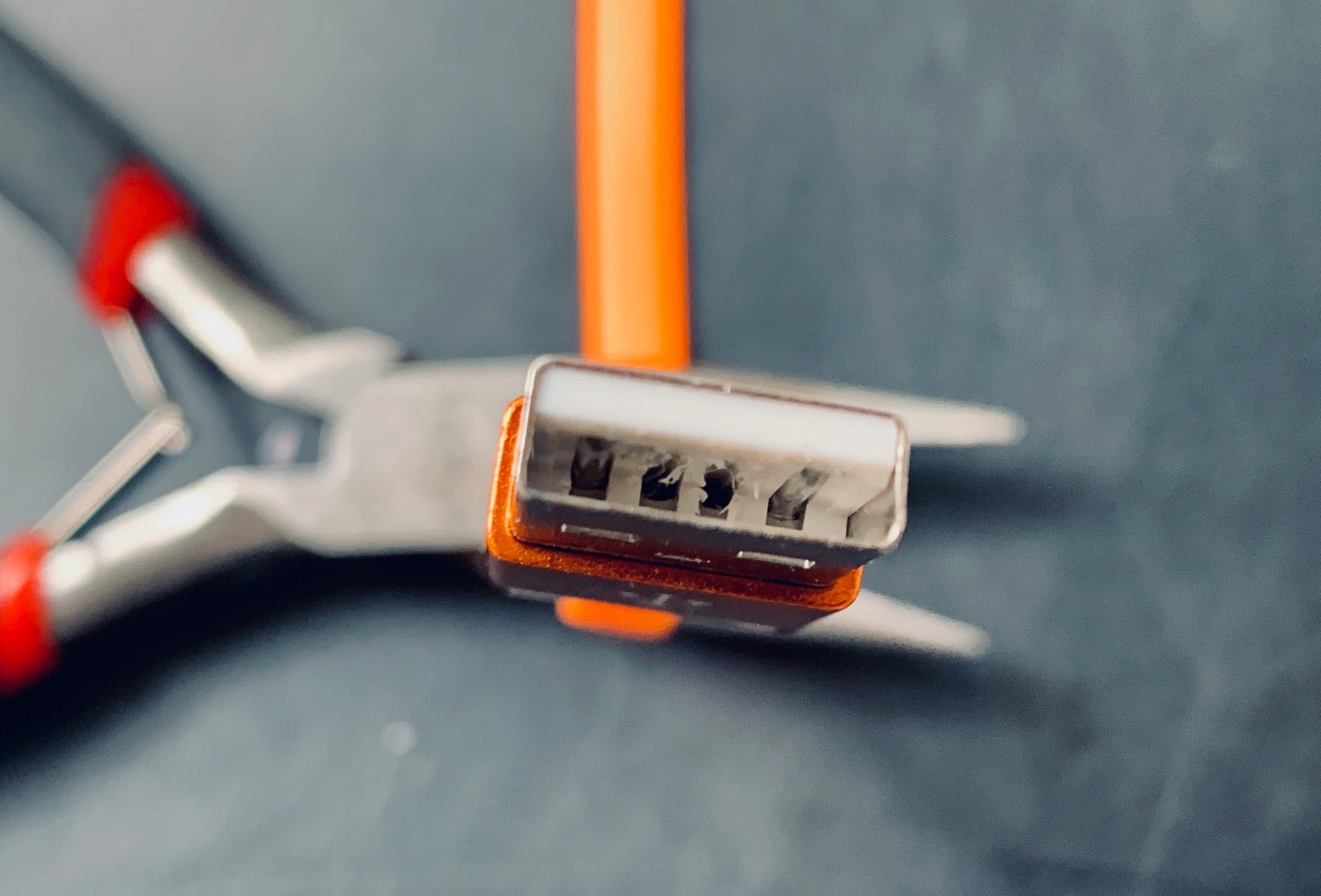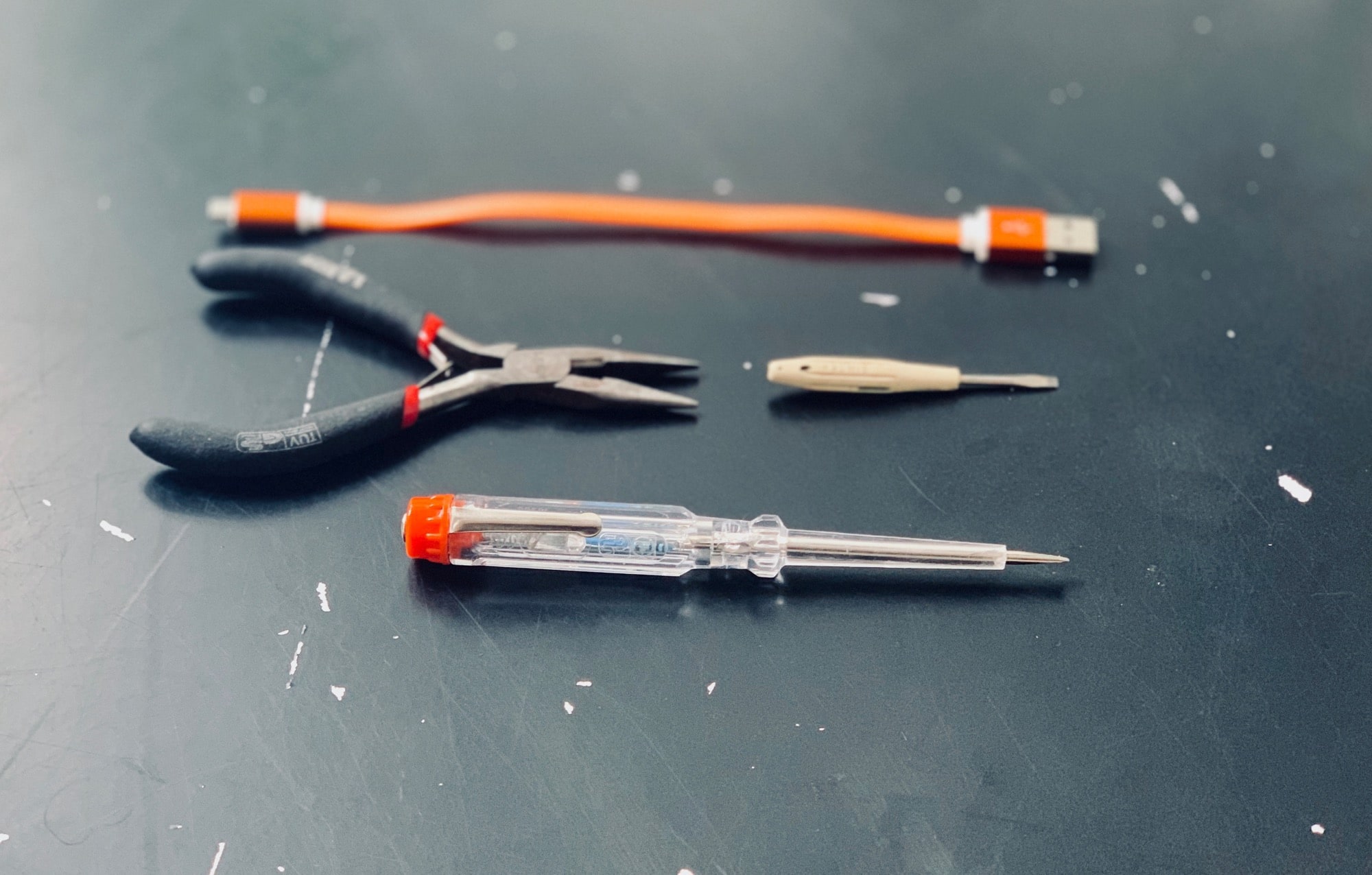USB is dirty. Just like you’d never stick your body parts into a mysterious public hole, neither should you plug your iPhone into a public charging station. iOS is pretty good at rejecting unknown connections from USB, but why take the risk?
There are a few ways to make public iPhone charging safe. One is to plug into a power outlet using your own plug and cable. But what about on a plane or train, or other public spot where only USB outlets are available? Or a friend’s computer, one that might be riddled with malware? Then you need a custom USB cable, one that only passes power, and not data. The good news is that, if you have an old Lightning USB cable laying around, you can easily fashion your own, just by yanking out two pins from inside the USB plug.
Here’s how.
This post contains affiliate links. Cult of Mac may earn a commission when you use our links to buy items.
USB power-only vs. USB data
The object of today’s project is to turn a regular USB cable into a charge-only USB cable. This can be safely plugged in to any USB socket. Because you have physically severed the data connection from the plug, you remove the risk of malware coming down the wire.
We do this by removing the data pins from the USB-A end of the cable. You can do this with any kind of USB cable. I did it with a USB-A to microUSB cable, because I needed a dumb power cable for a particular gadget.

Photo: Charlie Sorrel/Cult of Mac
Warning: At best, this modification will leave you with a USB cable that will never again pass data. You won’t be able to sync your iPhone with your Mac (or anything else). The mod is all but irreversible. And at worst, you might end up junking a perfectly good cable. The actual mod is straightforward, but if you’re not accustomed to working with electronics, or if you don’t have a deft hand, you could screw up everything.
How to turn any USB cable into a power-only cable
A USB plug has four pins. The outer two are for power; the inner pair is for data. We want to remove the middle pair, and leave the outer pair.
To do this, you’ll need:
- A small flat-head screwdriver
- A pair of needle-nose pliers
First, eyeball the A-plug end of the cable. There’s a white plastic block that occupies half the space. The pins are laid on the interior surface of this plastic block. We want to use the screwdriver blade to prise the two center pins away from the plastic, far enough that we can grip them with the pliers. Start with one pin.
Go ahead and do this. A good, sharp screwdriver blade works best. Avoid knives, as you’ll end up slipping and slicing a finger. The trick is to get the corner of the screwdriver blade under the pin, and then lever it up. It’s tricky, but straightforward.
Take your time. And be careful to only touch the inner pair of pins. If you move the outer pair, you’ll risk damaging anything you plug this cable into later.
Yank it out
Once you have levered up one pin, grab your needle-nose pliers, open them up a little, and push them into the hole. You want to grab the tip of the pin you just levered up, then pull it out. These pins won’t be soldered — they’re just held in by friction, so you can pull them out nice and clean. You may have to push your pliers to get them far enough into the gap, but don’t worry. The USB plug metal is springy, and can take a bit of abuse.
Then, just repeat for the other pin.
After you have pulled both pins, take another look inside the plug. Make sure there are no shards or peelings of plastic loose inside there. If so, scrape them out.
Using your new data-safe USB cable
Now all you have to do is use the cable like any other. Whatever you plug the cable into, only power will be transmitted.
This comes in handy for the paranoid, as outlined above, but can prove useful in other situations as well. For instance, I have a small dongle that connects USB MIDI devices to the MIDI plugs on old-school music gear. But the device has a second USB socket for powering it, and for plugging it in to a computer.
I wanted to plug both ends of this dongle into the same USB hub — once to connect it to music devices, and once to power it. That meant I needed a way to pass only power, not data, into one of its USB ports. So I made a short power-only cable.
One final tip. Unless your doctored cable is very distinctive, like my orange one, you should mark it. Otherwise, you will get frustrated next time you grab it for syncing or other data transfer. A loop of red tape, or a few lines with a Sharpie, will do.


